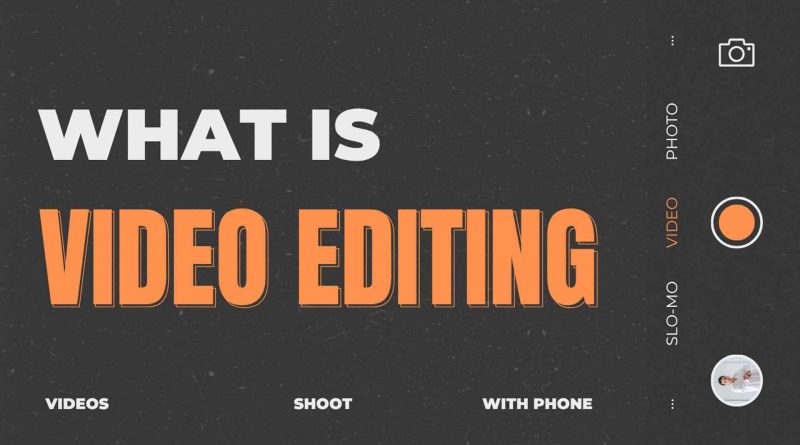What Is Video Editing? A Beginner’s Guide
Video editing is a crucial element in the creation of captivating visual content, playing a vital role in everything from movies and television shows to YouTube videos and social media clips. As technology continues to evolve, the art of video editing has become more accessible and versatile, enabling creators to transform raw footage into polished narratives that engage and entertain audiences. This comprehensive guide aims to demystify the world of video editing, covering its fundamental concepts, essential techniques, and the various tools available to both amateur and professional editors. Whether you’re looking to enhance your storytelling capabilities or simply explore a new hobby, this article will provide you with the knowledge and resources needed to embark on your video editing journey.
Definition of Video Editing
Video editing is the magical process of rearranging and manipulating video footage to create a polished final product. Think of it like cooking: you take a bunch of raw ingredients (clips, audio, effects) and mix them together to serve up something delicious (or at least watchable). Whether it’s trimming unwanted scenes, adding transitions, or splicing in music, video editing transforms a pile of raw footage into a cohesive story that engages viewers.
Key Concepts and Terminology in Video Editing
Basic Editing Terminology
Let’s face it: video editing has its own language, and it can feel like you’re deciphering hieroglyphics sometimes. Key terms include cuts (the basic transition from one clip to another), montages (a series of shots put together to show the passage of time), and b-roll (the supporting footage that adds context). Get familiar with these terms, and you’ll sound like a pro at the next parties—assuming you can find a party that’s not all TikTok challenges!
Understanding Video Formats and Resolutions
You wouldn’t show up to a fancy dinner party in sweatpants, right? Similarly, using the right video format and resolution is crucial for ensuring your masterpiece shines. Formats like MP4 and MOV each have their perks, while resolutions like 1080p and 4K determine how crisp and clear your video appears. In short, think of video formats as your outfit choices—pick wisely!
Genres and Styles of Video Editing
Video editing isn’t one-size-fits-all; it’s a diverse landscape! From the fast-paced edits of action movies to the serene cuts in documentaries, different genres demand unique styles. Styles like continuity editing seek to create a seamless flow, while non-linear editing might throw viewers off their game (but in a good way). Understanding these genres can help you choose the right approach for your project.
Essential Video Editing Techniques
Video editing isn’t just about slapping some clips together and calling it a day. It’s an art! Mastering essential techniques can elevate your videos from bland to grand. Let’s dive into some must-know skills to have in your editing toolbox.
Cutting and Trimming
First things first, cutting and trimming are like the bread and butter of video editing. You’ll want to slice away all that unnecessary footage to keep your audience engaged and craving more. Think of it as a game of “what can I cut out without making my grandma cry?” A well-timed cut can create suspense, humor, or a smooth transition to the next scene. Pro tip: keep your cuts clean and purposeful—nobody likes an awkward pause in their binge-watching spree!
Transitions and Effects
Now that you’ve trimmed the fat, it’s time for some pizzazz. Transitions are your best friend for moving from one scene to another without making it feel like a slap to the face. Think wipes, fades, dissolves—oh my! But beware: the overzealous editor can easily fall into the trap of using every flashy effect available. Remember, a simple fade can be just as powerful as a whirlwind whirlpool effect… sometimes even more so! Use effects judiciously to enhance your story, not overshadow it.
Color Correction and Grading
Want your video to look less like a home video shot on a potato? Enter color correction and grading! While color correction is all about fixing those pesky lighting issues (seriously, why did we decide to shoot in the dark?), color grading lets you set the mood and tone of your footage. Want a bright and cheerful vibe? Go for warmer tones! A moody thriller? Cool blues and greens will do the trick! It’s the icing on your editing cake, but be careful not to go overboard—unless you intend to make your audience see red!
Types of Video Editing Software
Professional Editing Software
If you’re serious about video editing, you’ll want to dive into professional software like Adobe Premiere Pro, Final Cut Pro, or DaVinci Resolve. These tools come loaded with features that let you slice, dice, and create effects like a master chef in a culinary competition. Sure, they might come with a learning curve that feels steeper than a rollercoaster, but the results? Worth it!
Consumer-Level Editing Tools
For the casual creator, there are plenty of consumer-friendly options that make video editing a breeze. Software like iMovie and Filmora offer user-friendly interfaces and essential features without overwhelming you with advanced tools. Perfect for editing family videos or testing the waters before diving into the deep end of professional editing!
Mobile Editing Applications
Don’t have access to a computer? No problem! Mobile editing apps like InShot, KineMaster, and CapCut let you edit videos right from your smartphone. These handy apps pack a surprising punch, allowing you to trim, add music, and sprinkle in effects while you’re on the go. So, whether you’re capturing your dog’s latest antics or documenting your travels, you can whip up a fun edit anytime, anywhere!Sure! Let’s break it down and sprinkle in some personality along the way.
